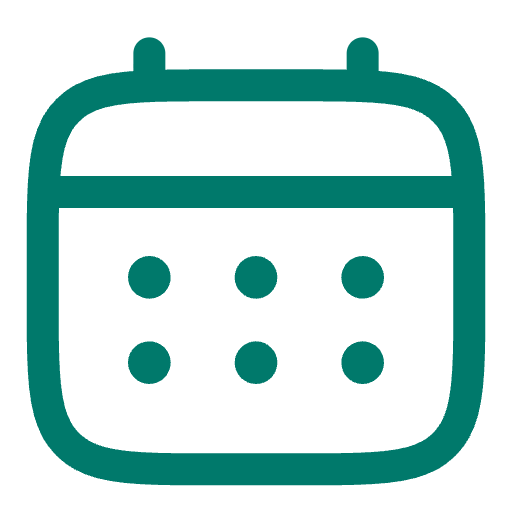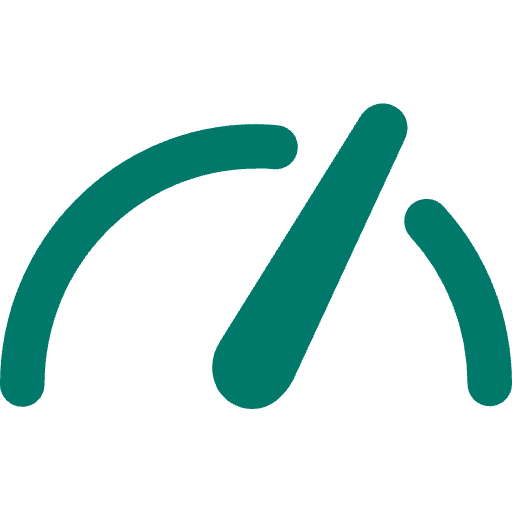
Borasu Pass Trek
TREK DIFFICULTY
Difficult
TREK DURATION
7 Days
HIGHEST ALTITUDE
17,585 feet
GROUP SIZE
12
TREK DISTANCE
62 km
BASECAMP
Uttarakhand
BEST TIME
May-June | September-October
PICKUP POINT
Dehradun (Prince Chowk)
Borasu Pass Trek Overview
Borasu pass trek is one such lesser-known high-altitude Himalayan mountain trek lying in the Garhwal Himalayas of India. Borasu Pass Trek is a very unique trek since it divides two different states of India: Uttarakhand and Himachal Pradesh. Moreover, Borasu Pass also falls near the border of Tibet. It is believed that the Borasu Pass, also known as Barasu Pass, was used as a trade route between Har ki Dun Valley and Kinnaur Valley in older days. Can you imagine the beauty of this trek during that time when the local people may have walked on the trails about 500-1000 years ago? What a spectacular beauty this high-altitude Himalayan Pass may have offered to the traders passing through it. Isn't it? Instead of traders, these days, this trek is sought after by the trekkers looking for challenging treks.
Borasu pass divides Uttarakhand from Himachal Pradesh and it is located near the border of Tibet. The Borasu Pass trek starts from the Tons Valley in Uttarakhand and ends at the Baspa Valley in Himachal Pradesh. This trek falls into the Govind Pashu Vihar National Park. Both Tons and Baspa Valley are named after the names of the respective rivers that flow through these valleys. Tons river flows through Tons Valley in Uttarakhand and merges with the sacred river Yamuna. Whereas the Baspa River flows through the Baspa Valley and merges with the Sutlej river.

By embarking on the Borasu pass trek, you will traverse through remote Himalayan villages like Osla, where you will get a chance to observe the unique ancient mountain architecture, culture and lifestyle of the villagers who live in these remote Himalayan villages. With every passing day, the Borasu Pass Trek will reveal astonishing beauty before you. From the village trails, this trek will take you to the beautiful vast alpine meadows and lush green forests of Pine, Bhojpatra and Rhododendrons; You will hike through ridges and witness the spectacular Marinda Tal which is a glacial lake. From there you will trek to some challenging terrains where you will encounter steep climbs and descends through moraines, glaciers and snow-capped mountains. Starting from a small village of Uttarakhand, this trek will take you to the Chitkul village of Himachal Pradesh.
During the Borasu pass trek, you will be able to see some spectacular high mountain peaks of Uttarakhand Garhwal Himalayas like Swargarohini, Bandarpoonch, Kala Nag (AKA Black Peak), Bonga Peak, Bali Pass and Dhumdhar Kandi Pass. From the Barasu Pass, if you look back, you will see the astonishingly beautiful Har ki dun Valley.
History of Borasu Pass Trek
Borasu Pass lies between Har Ki Dun (Uttarakhand) and Baspa Valley (Himachal Pradesh and connects Tons and Baspa rivers. Some people believe that the name 'Borasu' is derived from the local language- 'Bora' which means enormous or vast; it suggests the wide passage between the valleys.
Local people connect Borasu Pass with the epic Mahabharata and believe that Pandavas took this route on their way to heaven (Swargarohini). In early centuries, Borasu Pass served as a trading and seasonal route among traders, shepherds and pilgrims for moving between Tons and Baspa valleys.
Borasu Pass region was under the influence of small Himalayan kingdoms such as Garhwal Kingdom (Uttarakhand) and Bushahr State (Himachal). However no major battles took place here but the Borasu Pass region was crucial for hidden movement during conflicts and trade deals. Tribes like Bhotias and Rajis used this pass seasonally for grazing and trade.
In the late 1800s to 1900s, British surveyors and explorers discovered the pass during mapping and marking but still it was not used widely. In recent decades, Borasu Pass gained attention among serious mountaineers and trekkers due to its remoteness and natural alpine beauty. Now it's a part of a thrilling high-altitude trek from Har Ki Dun to Chitkul among the trekkers.
Highlights of Borasu Pass Trek
Dramatic High-Altitude Landscapes:
Borasu Pass trek is known for its dramatic high-altitude landscapes which keep changing as you proceed. Here you will cross surreal alpine terrain, dense forests, bugyals (meadows), glaciers, moraine fields and rocky ridges that make a dream trek for seasoned trekkers.
Rich Himalayan Flora:
On the lower altitude of Borasu Pass trek (up to 3,500m), you pass through the dense forests of blue pine, deodar and rhododendron. Beautiful Himalayan flora like primulas, anemone and balsam are full-blown during the summer season. Medicinal herbs like brahmi and jatamansi are also found here.
Unique Fauna Sightings:
In Borasu Pass region, you may spot rare and high-altitude wildlife including, Himalayan blue sheep (bharal), Himalayan monal (state bird of Uttarakhand), musk deer, red fox, lammergeier vulture and snow leopard (rare).
Har Ki Dun Campsite:
Har Ki Dhun is a popular trek base used by trekkers for nature sightings and acclimatization. It is located in a hanging valley and surrounded by snow-capped peaks like Hata Peak, Black Peak and Swargarohini.
Ratha Tho or Marinda Tal:
Ratha Tho or Marinda Tal is a lesser-known meadow near a glacial lake. It is a great spot for watching high-altitude birds and wildflowers. It acts like a stage ground before hitting the high glacier regions.
Cultural Crossroads:
The remote villages like Osla and Chitkul provide cultural insight into local architecture, customs, mythology and festivals. The temples and wooden houses display beautiful Kinnauri and Garhwali traditions.
Difficulty Level of the Borasu Pass Trek
Borasu Pass trek is considered a moderate to difficult and high-altitude trek. It is located at the altitude of approx 5,450 m (17,880 ft) which makes it one of the most difficult cross-border treks in the Indian Himalayas.
Borasu Pass trek is not suitable for kids, families and beginners. It demands physical fitness, mental endurance and prior high-altitude trekking experience. The trek duration is typically 8 to 9 days. Trekkers have to walk 6 to 9 hours daily along with covering the difficult and uneven terrain.
The terrain of Borasu Pass trek is highly diverse. It starts with dense forests and traditional villages in the Govind Pashu Vihar region and opens up to vast alpine meadows, moraine fields, steep climbs, narrow ridges and glacial sections, especially near the pass it becomes more difficult due to snowfields, crevasses and steep ascents.
Trekkers often require technical support as ropes, gaiters, crampons and guidance of experts. Due to it, solo trekking is not advisable. An expert/guide or support team are highly recommended while crossing the pass.
Unpredictable weather sometimes adds more difficulty. The upper regions and the area around the pass mostly have sub-zero temperatures at night. Sudden snowfall, storms and rain are common near the pass.
Borasu Pass trek has remote routes which offer limited emergency exits. The trek ends near Chitkul which falls in an isolated region.
In short, Borasu Pass trek is best suited for experienced trekkers with good health, stamina and willingness. It takes you to a beautiful place but also demands seriousness in trekking and preparation.
Best Time to Visit Borasu Pass Trek
The best time to do the Borasu Pass trek is from May to June and From September to mid-October. During this time, weather conditions are favourable for trekking and crossing the pass.
May to June
During this time, snow on lower altitudes starts melting but on higher altitudes, it is still present. Overall, it’s more settled and avalanche risk is reduced. Temperature is relatively moderate: around 6°C to 14°C in day time and can be below 0°C at night time; trekkers must stay updated on the weather forecasts. The forests are greener and flowers are bloomed. On lower trails alpine flora looks very mesmerizing.
September to mid-October
Post monsoon, weather is more reliable as rainfall subsides by early September. Sky is clearer and mountain peaks are visible. Daytime temperature is around 4°C to 12°C and at nighttime, it usually drops below 0°C, depending on lower and higher altitudes. From October, weather conditions can turn cooler so it's advisable to complete the trekking before mid October.
Months to Avoid
Trekkers should avoid the monsoon season (July-August) due to heavy rainfall. It increases the risk of landslides and makes visibility very poor. Trails become slippery and leech-infested. Similarly, from mid-October to April is also not considered favourable due to cold temperature and heavy snowfall blocks the pass.
How to Reach Borasu Pass Trek
To trek in Borasu Pass, start your journey by reaching Dehradun. You can fly into Jolly Grant Airport or can take an overnight train or bus to reach Dehradun. Dehradun is well-connected from major Indian cities.
From Dehradun, take a shared taxi or cab to go to Sankri village. From Dehradun to Sankri, it takes roughly 7 to 9 hrs.
From Sankri, drive to Taluka (about 1 hr). From Taluka, the trek officially begins. Trek to Seema/Osla along the Supin river and passing through Dhatmir and Gangaad (approx 5-6 hrs).
The next morning, ascend to Har Ki Dun (3,510 m). Har ki Dun is a picturesque cradle-shaped valley. Ascent takes almost 4-5 hrs (10 km).
The next day, trek to Ratha Tho (4-5 hrs) via Morinda Tal. Take an overnight stay here. Next morning, trek to Borasu Pass Base Camp at Upper Lamjung (3-4 hrs).
Summit Borasu Pass early in the morning then descend to Bonga (7-8 hrs) in Himachal Pradesh.
The last day, descent through flower meadows into Chitkul (15 km, 7-8 hrs). Chitkul is the last village before the Tibetan border. From Chitkul, arrange transport back to Sankri or onward destinations.
Borasu pass trek - Total Duration: 9 Days, Pass Altitude: 5,450 m
Day 1: Dehradun → Sankri (Drive: 200 km, 8–9 hrs)
Scenic drive via Mussoorie, Purola, Netwar
Overnight in Sankri (1,920 m)
Day 2: Sankri → Taluka (Drive) → Seema/Osla (Trek: 12 km)
Jeep ride to Taluka
Trek through forest and riverside to Seema (2,560 m)
Day 3: Seema → Bhoj Gadi (Trek: 10 km)
Trek through mixed forest and steep climbs
Campsite near meadows
Day 4: Bhoj Gadi → Devsu Thatch → Har Ki Dun (Trek: 12 km)
Stunning meadows, valley views
Overnight at Har Ki Dun (3,566 m)
Day 5: Har Ki Dun → Marinda Tal → Borasu Base Camp (Trek: 8–9 km)
Trail becomes alpine with glacial terrain
Camp at Base Camp (4,600 m)
Day 6: Borasu Base → Borasu Pass → Bonga Camp (Trek: 14 km)
Steep ascent to Borasu Pass (5,450 m)
Enter Himachal side; descend to Bonga Camp
Day 7: Bonga Camp → Chitkul (Trek: 12 km)
Final descent with views of Baspa Valley
Reach Chitkul (3,450 m), roadhead in Himachal
Day 8: Chitkul → Shimla (Drive: 250 km)
Drive via Sangla, Rampur, Narkanda
Day 9: Shimla → Dehradun (Drive/Bus)
End Trek
In Himalaya Shelter, we provide you with the option to customize your Borasu Pass trek experience. Whether you're an avid mountaineer, an adventure seeker or a group of friends, you can opt for our personalized tailor-made expedition program. This customized program will be exclusively designed for you, taking into account your specific requirements for transportation, accommodation, meals, technical equipment and any other premium facilities you may need during the climb.
Starting from Dehradun (pick up point), the Borasu Pass trek passes through scenic destinations and reaches Taluka (basecamp). From here, you start your official trekking journey.
Himalaya Shelter ensures your journey is safe and memorable with experienced local guides, technical support and all necessary permits. You can even request offbeat routes or sunrise hikes for a more immersive Himalayan experience.
Moreover, no other participants will be added to your group. Choosing a Customized program will enable you to enjoy your journey without any hesitation.
Day 1: Drive from Dehradun to Sankri
Drive: 190 km, 8-9 hrs
Altitude Gain: 2,100 ft – 6,500 ft
Today is going to be the first day of the adventurous Maldaru Trek. Early in the morning, you will depart for Sankri; a small village in Uttarakhand. Dehradun to Sankri is a beautiful road trip passing through curvy Himalayan mountain roads. Sankri village is considered to be the base camp for many famous and offbeat treks like the Kedarkantha Trek, Har Ki Dun Trek, Barradsar Lake Trek and Bali Pass Trek
Let’s know some interesting facts about today’s road trip to Sankri. You will witness spectacular views and some ancient heritage sights on the way that represents our country’s rich culture. One such place is Lakhamandal. We will talk about it later though.
Kempty…You must have heard this word right? On the way to Sankri when you leave Mussoorie, you will pass through beautiful Kempty waterfalls also known as Kempty Falls. You will get a chance to witness the beauty of this famous Himalayan waterfall.
When you start riding on the Mussoorie – Yamunotri road, you will come across another beautiful place named Lakhamandal. It is not exactly on our way but If the time allows, you can pay a visit to this temple. While passing the town you will realize why Uttarakhand is called Devbhumi. Lakhamandal is mentioned in the ancient Indian scripture, the epic Mahabharata. This temple is famous not only because it is mentioned in Mahabharat, but also because of its significant architecture. The temple is dedicated to lord Shiva.
Let’s move a little further, and you will reach Ganganani, famous for its natural hot springs. Ganganani is a small village in Uttarakhand near Harshil Village. Here, you will take a break by the riverbank. All Indian rivers are considered sacred as they sustain countless lives. Sit down, dip your legs in the water, and listen to the soothing music of the river. You will reach Sankri by the evening and check into the beautiful cosy guest house.
Day 2: Sankri (1,920 m) to Seema (2,560 m) via Taluka (1,800 m)
Drive: 15 km, 1 hr
Trek: 12-14 km, 6 hrs
Altitude Gain: 6,500 ft – 8,398 ft
After a hearty breakfast, we will be transported to Taluka by car. The drive is a bit bumpy. The trek commences from Taluka on a stony path. The motorable road in Govind Pashu National Park ends here. With the river Supin gushing through rapids beside us, under the shade of walnut, pine and other trees, the walk is quite pleasant. Often the passing villagers greet us on the way. We also see plantations of the red-coloured Himalayan crop amaranth, locally known as cholai.
A few hours and crossing over a few streams later, we see the village of Gangad across the river on the left. We continue our hike and after about an hour, the quaint village of Osla unfolds itself. Osla is a household name among trekkers. Home to about 200 families, it gives us a peek into Garwahli culture. Seema is a tiny settlement opposite to Osla on the other side of the river. We set camp here or stay in a hut with a local family in the village.
Day 3: Seema/Osla to Har ki Dun (3,510 m)
Trek: 12-13 km, 7 hrs
Altitude Gain: 8,398 ft – 11,515 ft
From Osla the trail gradually rises higher and passes through bushes of flowers like orchids, fleece flowers and sunflowers. The ascending path climbs high above the confluence of Supin river and the river from Ruinsara valley.
After traversing higher up along the left side of the river, we camp at a very panoramic spot in Har ki Dun, located at the junction of two valleys – one originating from Jaundhar glacier and the other from beyond Hata glacier.
Day 4: Har ki Dun to Ratha Tho (4,200 m)
Trek: 5-6 km, 3-4 hrs
Altitude Gain: 11,515 ft – 13,779 ft
Today we trek at moderate pace to reach Ratha Tho. On the wasy, we pass by Morinda Tal, a small lake. A part of the trek is a bit over boulders but with the views of snow covered peaks and wide valleys, it is a beautiful walk.
Day 5: Ratha Tho to Borasu pass base camp (Upper Lamjung) (4,900 m)
Trek: 6-7 km, 5-6 hrs
Altitude Gain: 13,779 ft – 16,076 ft
On this day, we walk higher up. The path is over boulders and quite often snow-covered. The campsite at upper Lamjung is also on snow mostly. From here one gets a beautiful view of the valley behind.
Day 6: Borasu pass base camp (Upper Lamjung) to Bonga (4,000 m) via Borasu pass (5,360 m)
Trek: 10-12 km, 7 hrs
Altitude Gain and loss: 16,076 ft – 17,583 ft – 13,123 ft
We start before sunrise for this day’s trek. As we keep moving higher up, the views open up behind us. After crossing two glaciers and a final ascent over boulders, the cradle shaped Borasu pass lies before us. We descend towards the Himachal side of the pass into a large glacier usually glissading over the initial slope. The trek further is along a tributary of Baspa river. We may find shepherds near the campsite.
Day 7: Bonga to Chitkul (3,430 m)
Trek: 15 km, 6-7 hrs
Altitude loss: 13,123 ft – 11,253 ft
Today’s trek takes about 8 h. This is an easy walk through flower fields and forests. Overnight in Chitkul Village. The trek ends here. One can get public or private transport from Chitkul or Sangla to Shimla.
Inclusion
Our treks are specially designed by the experienced team at Himalaya Shelter, taking you on an adventure of a lifetime all while making you connect not only with the bountiful nature but also with yourself and with others on the trek with you creating wonderful memories which will last you a lifetime. All Himalaya Shelter treks are guided by experienced Trekkers having vast knowledge and experience of the region, providing with insightful information and stories pertaining to the region’s flora and fauna and the history of the region whilst the trek. It is safe to say that on successfully completing the trek, one will gain tremendous insight and experience along with lifetime memories.
- Transport support from Dehradun to Sankri-Taluka
The trek ends at Chitkul. The trekkers can hire a cab from Chitkul village for their further journey. ( Pick-up location: Prince Chowk, near Dehradun Railway Station - Pick-up Time: Around 7:30 am )
- Accommodation – At Base Camp, stay at a local homestay or guest house for one night each, which will give you an insight into the authentic lifestyle of the locals.
On Trek stay in a 2-person Vango Halo Pro/A-Shape tent, which is to be shared by two trekkers, built to withstand extreme weather conditions and at the same time making you comfortable after a hard day’s trek. - Camping Equipment – specially designed sleeping bags that can withstand harsh weather conditions, foam mattresses. Other safety gear like microspikes, gaiters, an ice axe, and helmets will be provided.
- Medical Kit – our team will be equipped with an extensive medical kit, which our team is trained and experienced to use. Oxygen cylinders are used after they are thoroughly inspected throughout the Trek. Even campsites have large oxygen cylinders as backups.
- Permission - Forest entry charges for Indian nationals (Additional charges will be applicable for international tourists)
- Meals – Breakfast, packed lunch (on trek days), evening snacks, and dinner will be served. A hearty, delicious, and nutrition-filled Veg meals with egg preparation will be provided throughout the trek. (Jain and Vegan Food can also be arranged on prior notification.)There will be a dedicated Kitchen Tent along with a dining tent, which will have a dining table too.
- Our Team – A highly experienced and AMC-certified Trek Leader who will help ensure that the entire trek goes smoothly and safely while navigating the challenging conditions during the trek, and is skilled enough to navigate any medical emergency that can arise during the trek. Local and route Guides who are well-versed with the region and provide an in-depth insight into the local customs and knowledge of the flora and fauna endemic to the region. A dedicated Kitchen staff, which includes a Cook, a helper, and other support staff. There will also be porters and mules to carry common equipment.
- Cloakroom - We have a cloakroom facility available for extra luggage. Every trekker is permitted to leave their luggage behind at no charge.
Exclusions
- Personal expenses like tips, personal medicines, phone calls etc.
- Travel Expenses - Travel expenses from your hometown to the mentioned Pick-Up Point are not included in the trek fee.
From the scheduled pick-up spot to the base camp, we have our own fleet of vehicles like Bolero, Innova, Dezire, or Tempo Traveler (12-seater). This is be shared by trekkers for a pre-decided amount. All vehicles are non-AC. - Personal Equipment - Any personal gear like jackets, shoes, cutlery, or backpacks are not included in the trek fee. We recommend renting them from our Rental Store for an affordable fee. This can be pre-arranged to avoid last-minute hang-ups.
- Offloading - We encourage carrying your backpack to get into the true spirit of trekking. However, if needed, you can opt to offload your personal luggage of up to 12 kgs for an additional cost of INR 500 per bag per day.
- Trek Insurance - A mandatory trek insurance fee is charged in addition to your trek fee. Since most medical insurance doesn’t cover adventure activities, trek insurance offers essential coverage, enhancing your safety without a significant financial burden.
- Buffer day on the trek - We have kept a buffer day on the trek to account for any weather-related delay. If this is utilized, you will need to pay an extra amount to your trek leader.
Anything apart from inclusions - Please carry a lunch box for a packed lunch/breakfast to avoid using polythene and Aluminium foil.
Keeping the Himalayas clean is our own responsibility. Reduce the use of Plastic when you are in the abode of the Sacred Himalaya. 🌱
Borasu Pass lies on the border of Uttarakhand and Himachal Pradesh and connects Har Ki Dun valley (Uttarakhand) with the Baspa Valley (Himachal).
The pass stands at an altitude of 5,450 meters (17,880 feet).
The trek usually takes 8 to 9 days, covering around 60–70 km.
The trek starts from Taluka (near Sankri) and ends at Chitkul in Himachal Pradesh.
First, reach Dehradun, then travel by road to Sankri and further to Taluka (by jeep or trek start point).
Yes, this is a challenging high-altitude trek suitable for experienced trekkers.
Due to remote terrain and glacier crossings, a guide or team is highly recommended.
Only camping is possible after Taluka. There are no homestays beyond Sankri.
Mid-May to mid-June and September to early October are ideal.
Yes, you’ll cross glaciers, boulders and snowfields; rope and technical support may be needed.
Yes, you need forest entry permits and possibly inner line permits due to border proximity.
No, it’s not suitable for beginners, children or families.
You’ll see Har Ki Dun valley, alpine meadows, glacial terrain, rare flora and views of Swargarohini peaks.
Read More on Borasu Pass Trek
Photo Gallery








Treks by Categories
Treks By Month

Treks By Experience
























